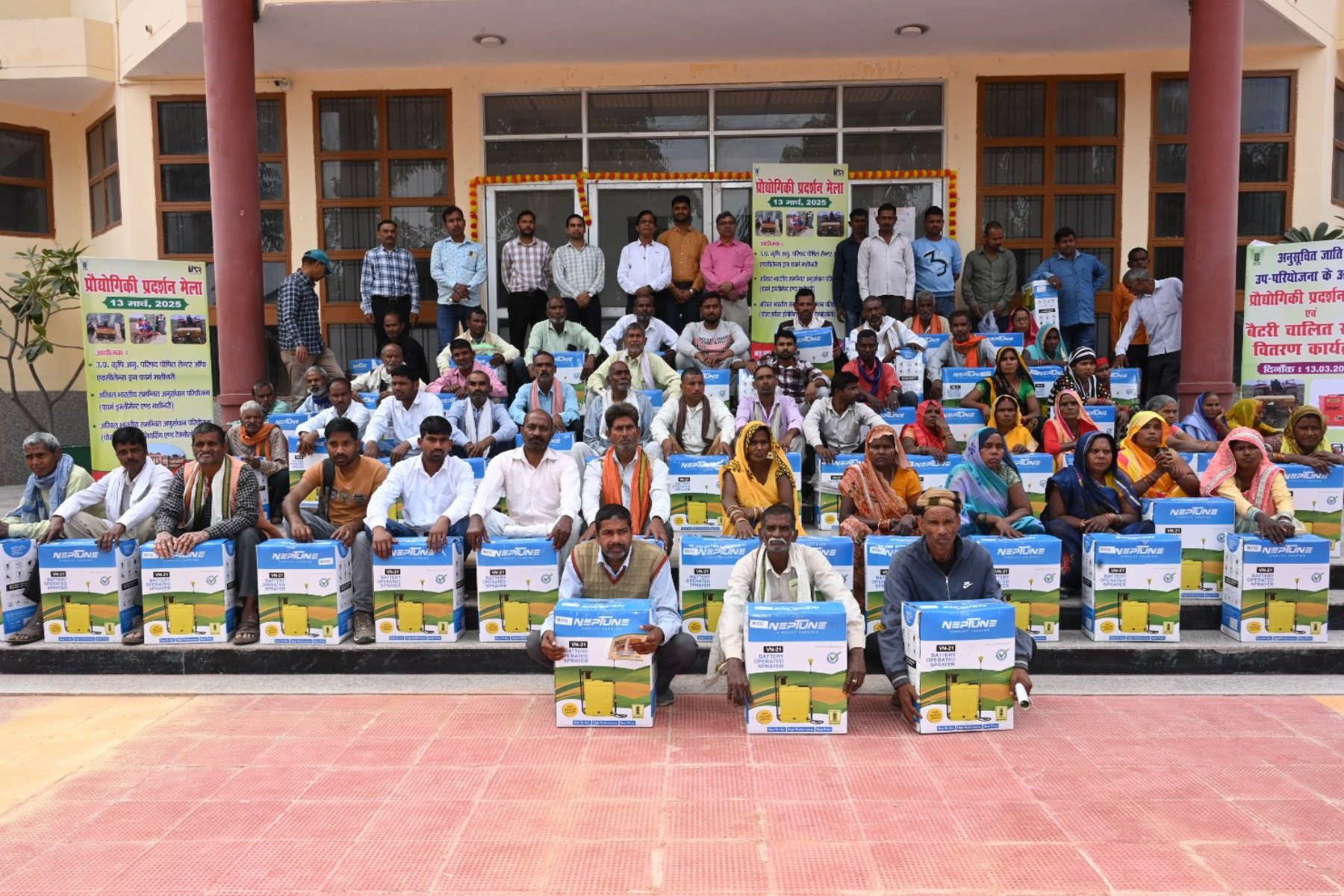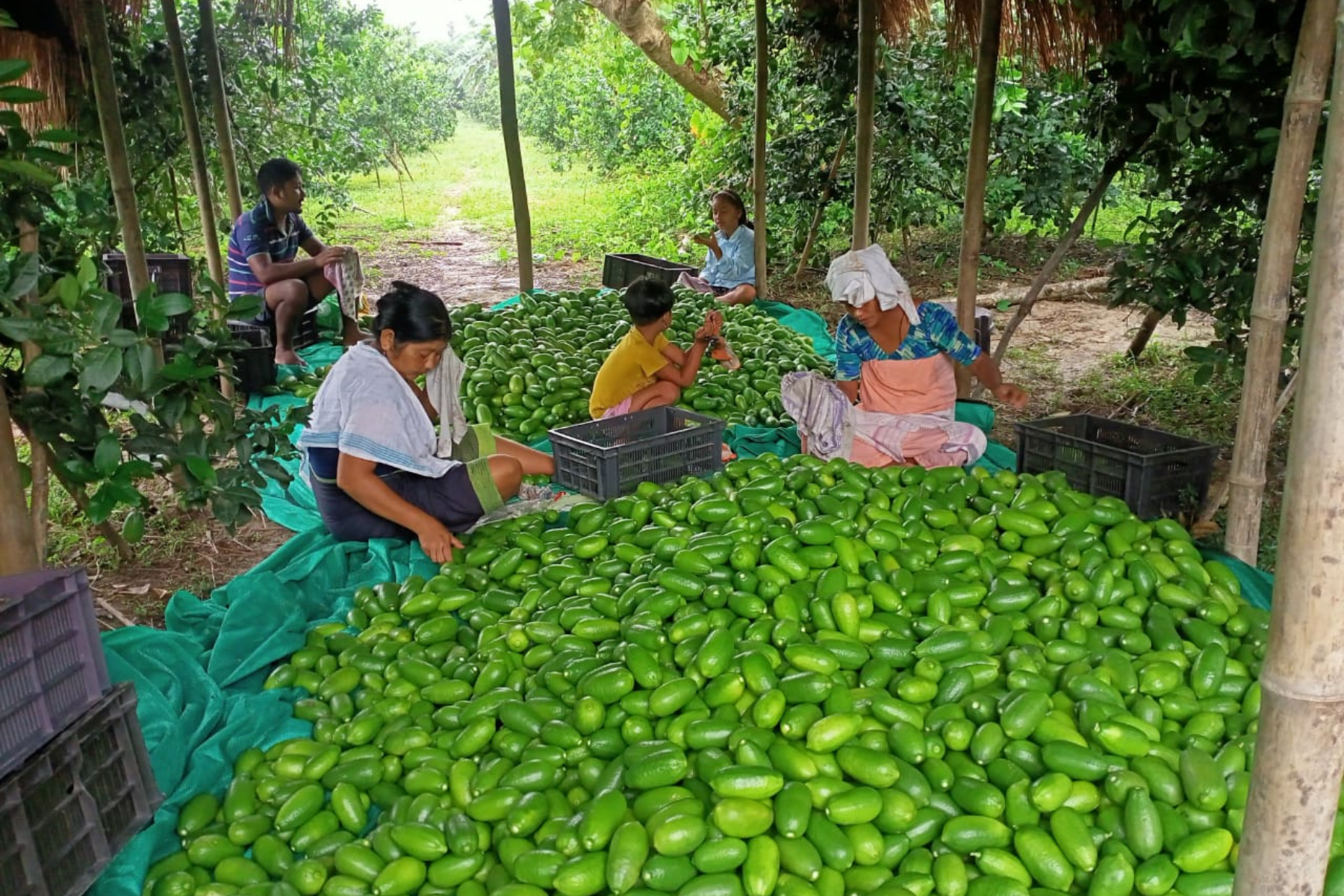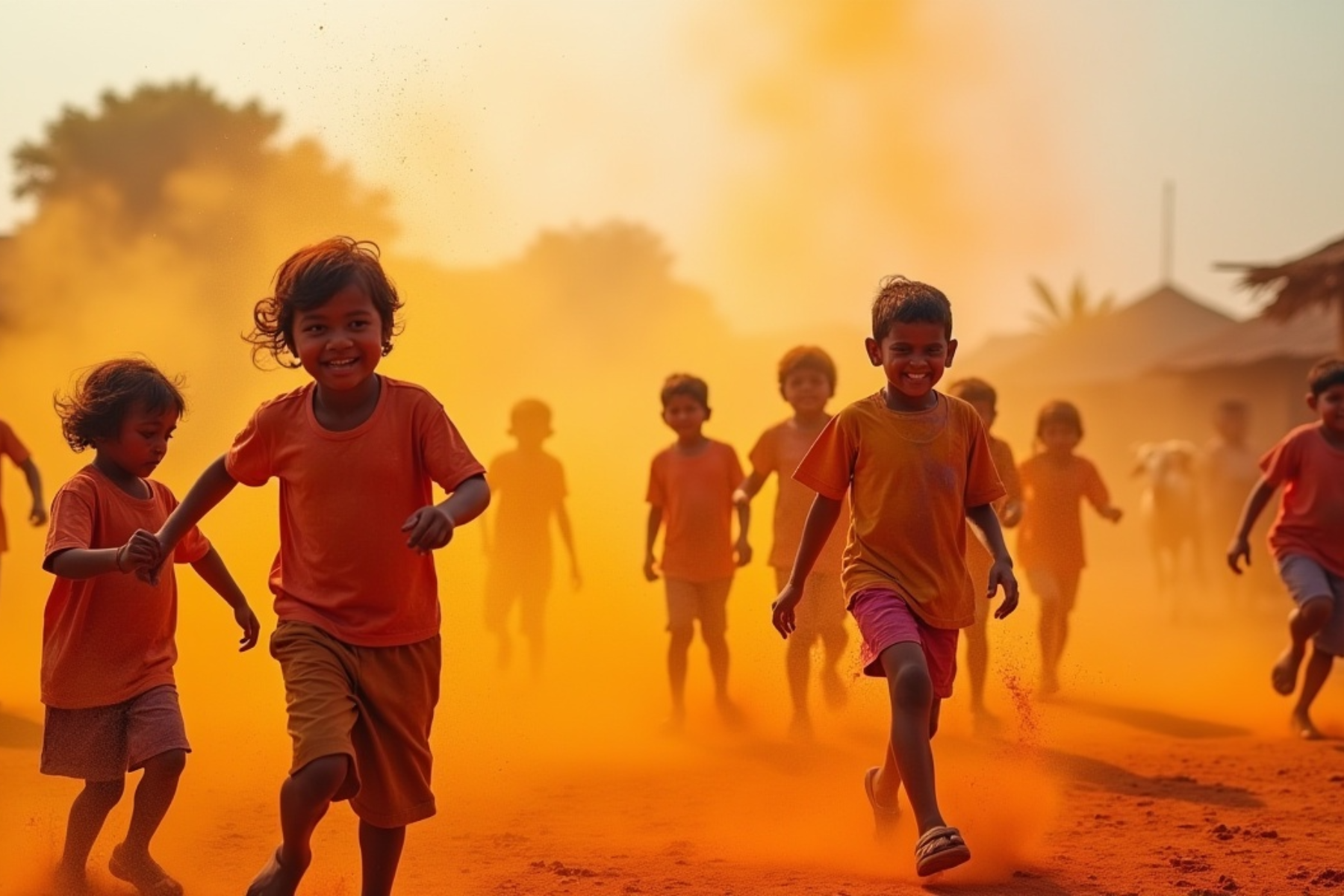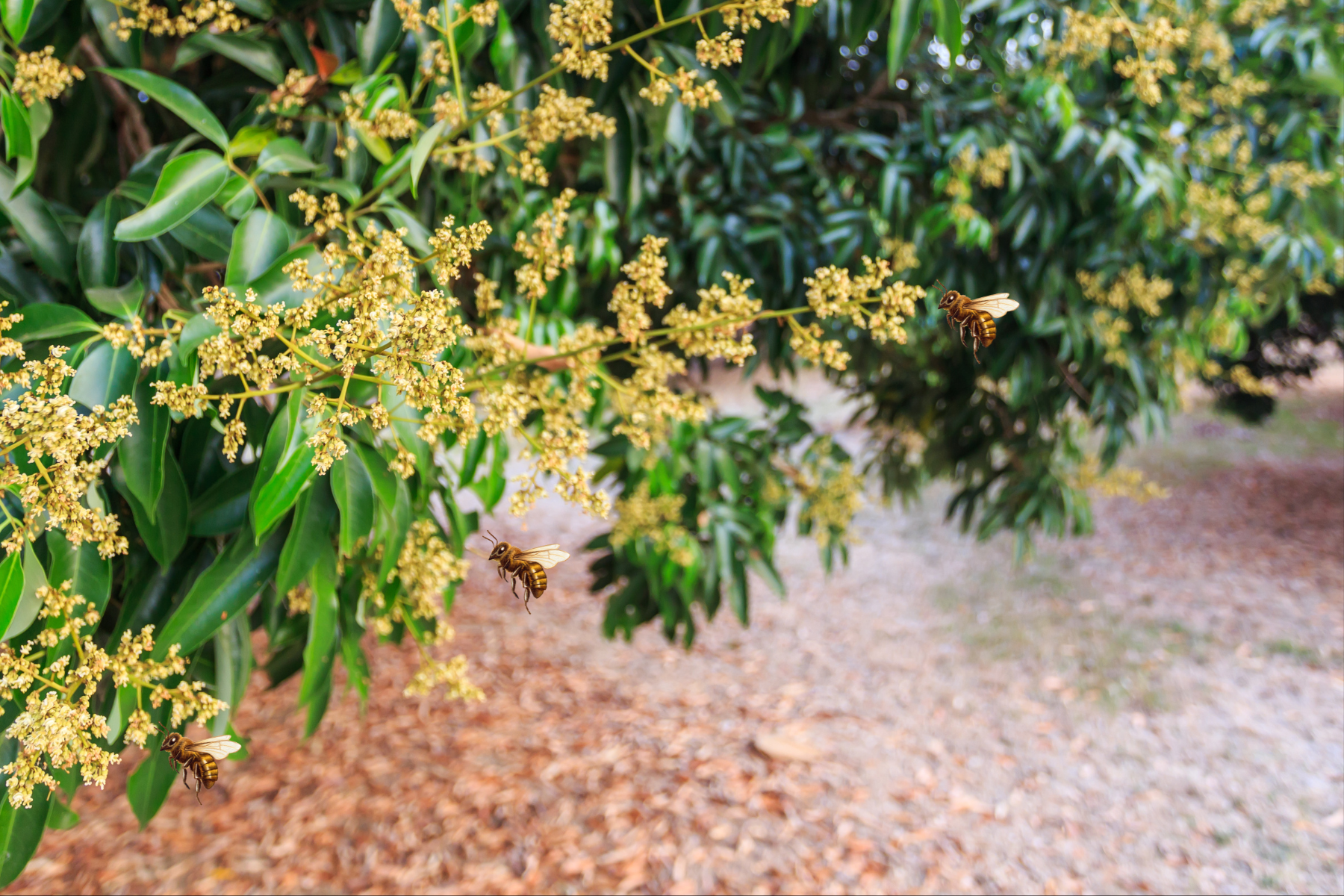Shubham Koul and Mohd Arif
In the parched by lanes of the ghost village, Savoderam Patil was a rare shadow for the two visitors.
“It won’t rain until the next season,” he muttered as he looked up at the sky and went back to picking dried leaves from his farm. A crippling lack of wa-ter has turned his 600-tree mosambi (sweet lime) orchard barren.
Most farmers in the Paraundi village in Maharashtra’s Marathwada region had locked their homes and were gone. All that was left was parched crops and dry hand pumps.
Around him stretched a massive expanse of arid land where farmers are desperate for rains.
“Last year was a bad monsoon year,” said Zakir Khan, a farmer in his early 30s. “We suffered heavy losses in our kharif yield (cotton and maize). There is little income to survive this season.”
When Gaon Connection reporters visited the region, Sanjay Ramnath, a farmer from Parundi village, Aurangabad, said farmers from 35 villages of the Paithan Taluka, which falls under the Jalna constituency, would boycott the elections. These villagers have been demanding loan waivers and com-pletion of dams for regular supply of water, but none of their demands have been met. It is unclear if the voters actually did not vote.
Marathwada has given a Lok Sabha speaker, three chief ministers, a deputy chief minister and several ministers — and yet, it remains the most back-ward region in Maharashtra.

Deficit rainfall in Marathwada
According to a research report published on January 1 by SANDARP (South Asia Network on Dams, Rivers and People), Maharashtra, which is facing a drought situation, is also facing large deficits in its October-December rains.
For most of the rain-fed farmers here, while the Kharif crop was bad, Rabi also brought bed news. The summer is creating nightmares. Some observ-ers are already calling the Maharashtra situation this year worse than the 1972 drought, the worst drought state faced till date, the report men-tioned.
Within Maharashtra, Vidarbha received just 10 mm rain, 88% below nor-mal and Marathwada received just 16 mm, 84% below normal. Marathwada also experienced 22% rainfall deficit in the South West Mon-soon.
On April 6, 2019, the High-Resolution South Asia Drought Monitor pub-lished a report titled ‘Drought Early Warning System India’, saying that 16.59% of India is facing a drought-like situation.
Earlier this year, IIT Gandhinagar’s ‘Water and Climate Lab’ released data regarding the drought situation in India. According to those numbers, 47% of India — half of the country — is staring at drought. When these numbers were released, the monsoon was still three months away.

‘In Marathwada, farmers have to pay for tankers’
According to the live water storage data of Maharashtra Water Resources Department, as of October last year, reservoirs of large projects in Marathwada had only 26.63% water. The year before that, they were 78.53% full.
Medium and small-scale projects in the region had 22.39% and 22.35% wa-ter. And that was the only water the region had to survive on until the arri-val of the monsoon, which was then eight months away.
As of May 31, Maharashtra has only 12.37% water stock available in all its dam projects. Last year same day, it had 20.44% water. In case of Au-rangabad division (Marathwada), only 2.81% water is left. Last year it had 19.8% water available.
In November last year, the Maharashtra government declared drought in 20,000 villages across 26 districts. Eight districts of Marathwada are among the worst hit. Here, more than 90% of the villages — 7,765 of 8,534 villages — are drought-hit, the Hindustan Times reported.
Around 1,300 tankers are supplying drinking water to 983 villages and 513 wadis in Marathwada every day. Water from the Ujjani dam in Solapur dis-trict is being transported to Marathwada by train, Down to Earth reported. Latur, which in 2016 became the first city in India to be supplied drinking water by a specially commissioned train, has been the epicenter of this drought.
The state government says it has been taking a slew of measures to deal with the drought and the water scarcity.
In December 2014, Maharashtra chief minister Devendra Fadnavis launched the Jalyukt Shivar Abhiyan (JSA), Maharashtra government has launched the project in a bid to make Maharashtra a drought-free state by 2019. The project involves construction of cement and earthen stop dams, deepening and widening of streams, work on nullahs and digging of farm ponds.
“Nearly 82% area of the state falls in the rainfed sector and 52% area is drought prone due to uncertain, insufficient and irregular rainfall which adversely affects agriculture,” said Suresh Kulkarni, secretary, Maharashtra Water Resources Regulatory Authority.
“The JSA thus aims to make 5,000 villages free of water scarcity every year and bring water empowerment to 25,000 drought-hit villages over the next five years in a bid to conserve the water, to recharge the water, so that wa-ter is available not only for farming, but also for drinking,” he added.

However, village residents say that sounds good only on paper.
“The government has built new harvesting structures, but with very little water available, how am I supposed to conserve it?” said Bhagwan Chade of Parundi village, Aurangabad.
“We have to travel three to five kilometers on a daily basis to get drinking water,” Chade told Gaon Connection. “We call for water tankers and spend Rs 800 per tanker. We use that water for irrigation. We have to spend Rs 12,000-15,000 for 1 acre of cotton crop. The fertilizer prices have gone up, so have wages of agriculture labourers,” he said.
“We are unable to get a fair price for our crops. You will find most of the houses in Marathwada locked. People are leaving for cities in search of bet-ter opportunities.”
Maharashtra and Andhra Pradesh are facing a severe scarcity of water. Vi-jay Jawandhia, head of the Shetkari Sanghathana (farmers’ organisation), told Gaon Connection: “Unavailability of drinking water is a serious issue in Maharashtra. Here, 90% of the region is one-crop region. It didn’t rain last year so the wells have dried up in April-May. If we don’t get good rain in this year, I have no idea how are we going to survive.”
Farmer suicides on the rise
In Maharashtra, on an average, eight farmers are committing suicide every day. “In Aurangabad, at least 300 farmers have committed suicide in 2019,” farmer Zamiruddin Sheikh told Gaon Connection.
Zakir, another farmer, and his father have more than three acres of land. They have orchards of mosambi and pomegranate. In 2015, the region re-ceived a decent amount of rainfall. But over the past two years, he has to spend money from his pocket to pay for water tankers that arrives from 35 kms from his village.
“For mosambi cultivation, we need water for irrigation until June 10. We end up spending 7-7.5 lakh on this crop every summer,” said Zakir. “Last year, because of the drought and because we could not get a fair rate, we could sell stock worth Rs 3 lakh. That’s amounts to a loss of Rs 4 lakh. In such a scenario it becomes difficult for farmers to survive,” he said.
“It’s impossible for them to pay back loans and hence they end up commit-ting suicide,” he added.
In June 2017, the Devendra Fadnavis government declared farm loan waiver worth Rs 34,000 crore. However, around 4,500 farmers have committed suicide after the loan waiver, which is a clear indication that the situation of farmers didn’t improve post waiver. This information was re-vealed in an RTI enquiry.
There is a large dam in the region. Local farmers say it has not eased the cri-sis, and is a symbol of misplaced priorities.

The Jayakwadi Dam was constructed in 1976 on the Godavari river in the Aurangabad district.
“The dam was meant to serve irrigation problems in drought-prone Marathwada,” said Vijay Diwan of Nisarga Mitra Mandal, a local NGO.
“However, its dead stock is about 26 TMC. A major chunk of it has been filled with silt, reducing actual availability of water,” Diwan told Gaon Con-nection. “The government should have revived traditional water bodies and ponds to bring respite to people in Vidharba and Marathwada region of Maharashtra.”
He added: “Between 1960 and 1980, the farmers in Marathwada used to be dependent on jowar, maize and peanuts. However, with changing times, they are now heavily dependent on sugarcane and cotton crops. Cotton is the traditional crop of Marathwada. It requires less water than the cash crops. As farmers are dependent on water for agriculture, it is important to have agriculture processing units, which could help farmers get better yields even if there is rainfall deficit.”
Professor Vimal Mishra, professor at IIT Gandhinagar told Gaon Connec-tion, “We need to make our farmers aware and need to have more con-crete, long-term plans to deal with this issue. We must educate our farmers and inform them about technological advancement so that they are able to produce more using limited water.”




















